Textile Storage
What you will need:
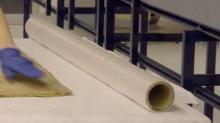
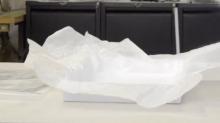


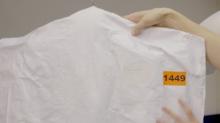
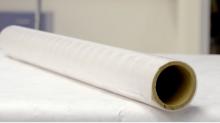
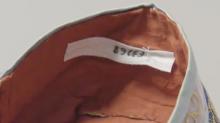
Transcript
Getting started
I am going talk to you about how to store textiles and costumes in your collection.
Before storing any textiles, they should be cleaned by brush vacuuming and thoroughly inspected for insects.
Accessories
Accessories such as hats should be padded out to keep them in their intended shape. You can use balls of acid free tissue or make a cushion from Dacron covered with stretch knit fabric. Do not overstuff the hat, as this will damage the seams.
Costumes and textiles
The best way to store costumes is in a conservation-quality box made from either blue grey board or polypropylene. Ideally use a box that is bigger than your textile so that it does not need to be folded. Line the container with prewashed cotton or acid-free tissue. The lining material should be large enough to cover the bottom of the box as well as to fold over and cover the textile. The lining material can then be used to lift the costume into and out of the box.
Folds and seams should be padded with sausages made from rolled acid-free tissue, polyethylene foam sheeting that is rolled and tied with cotton tape, polyethylene foam tubing, or Dacron covered with stretch knit fabric. Padding is important because textiles will eventually split along folds or creases.
It is best to store only one costume in a box to avoid crushing. If you do need to put in more than one to save space, ensure that the heaviest item is placed at the bottom.
Here we have used the acid-free tissue to line the box in which we have stored the textile. To make the padding to support the creases in the textile we have used Dacron covered in Tyvek. We have also used the same system to fill in the box to avoid any movement.
Strong costumes can be stored on padded hangers on a rack in order to save space. Hangers must be of a suitable size for the garment and be made of strong plastic or sealed wood. The hangers should be padded with Dacron and then covered with washed stretch knit fabric. Make dust covers for each costume from washed cotton or Tyvek. When using Tyvek, the smooth side should face towards the costume.
Small flat textiles can be stored in boxes or plan cabinets. They can be placed on a support such as blue/grey board so that they can be moved easily. Always interleave textiles with acid-free tissue if a number of them are stored one on top of the other.
Tapestries and wall hangings
Thick tapestries and wall hangings can be stored hanging on a wall or rack. They should have a Tyvek or washed cotton cover.
Rolling textiles
When it comes to storing long textiles, rolling is the most practical way.
You will need a sturdy tube that is at least 10cm longer than the length of your textile. The diameter of the roller should be chosen to suit the length of the textile, but should be at least 5cm. It is best to use acid-free cardboard rolls, but they are only available in a limited size range. They can be padded with Dacron and washed cotton to increase their diameter. Where a larger tube is required, you can use a cardboard tube from a carpet store or a PVC drainpipe. Cover the tube with Mylar or polyethylene sheeting, and then wrap the roll completely with acid-free tissue paper or washed cotton sheeting. Tuck the ends of the covering material inside the roll to secure them.
Prepare a clean flat surface for rolling such as a long table or a floor that has been covered with plastic or cloth. Lay out some acid-free tissue or clean washed cotton about 10cm longer than the textile at one end. Smooth out any creases as these can cause damaging creases in the textile. Place your textile on top of this layer, ensuring that there are no folds or creases and that the weave of the fabric is straight.
Most textiles should be rolled facing right side up. Textiles with a raised texture such as carpets, velvets or embroideries should be rolled face down.
Place the tube on the protruding end of the tissue; it should be parallel to the weave of the textile.
Roll the textile using a firm pressure. It is easier to have at least two people when rolling large textiles in order to maintain a uniform tension. Keep the textile straight, and smooth out the creases. You may need to pull back on the roller occasionally in order to keep the textile firmly wound. It can take practice to get right. Don’t be afraid to start again if your textile is no longer straight or has become creased.
Once the textile has been rolled, cover it with another layer of acid-free tissue, washed cotton or Tyvek. Secure the cover by tying the ends with cotton tape. It is important not to tie the tape too tightly because it can distort the edges of the rolled textile.
Rolled textiles should be supported from the sides so that they do not sit on the textile itself. It can be hung from a wooden dowel or have a steel pipe inserted through the tube. Blocks of thick ethafoam or sealed wood can also be used to support rolled textiles.
Remember
Correctly storing textiles in your collection will keep them safe from damage.
Thanks for listening.












